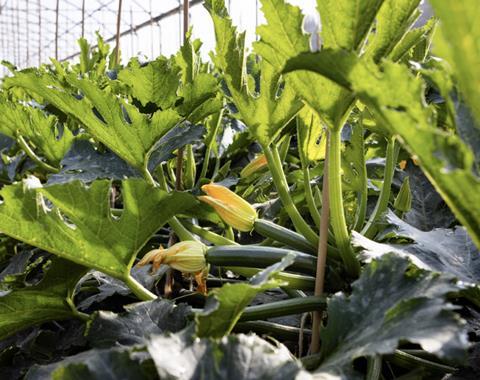ToLCNDV Information Centre for cucumber, melon, and squash provides growers with resources and control options for the virus

Syngenta has launched a new resource to combat the spread of Tomato Leaf Curl New Delhi Virus (ToLCNDV). The ToLCNDV Information Centre is a one-stop location providing key details about resistant varieties and agronomic insights to target this damaging pest.
“This virus is widespread and especially active in the Mediterranean Basin,” said Peter Szungyi, Syngenta Vegetable Seeds portfolio manager for watermelon and squash. “The number one priority for growers should be to prevent the virus vector from entering fields and tunnels.”
Because of the severe damage this virus causes in cucurbits, growers need solutions, resources, and resistant varieties to reduce the spread. The ToLCNDV Innovation Centre provides growers with resources and control options for ToLCNDV, in addition to answering frequently asked questions, so they can stay up to date with the latest updates on the virus.
Given the uncertainty caused by new viruses emerging in crop production, growers need a partner to help provide information about what ToLCNDV means for each crop it infects and what solutions are available to make the right decisions for their operations, Syngenta said.
“We identified this virus as a potential issue for melon, squash, and cucumber crops years ago,” said Pedro Pleguezuelo, portfolio manager for melon and cucumber. “Because of this, our research and development teams started working diligently to identify resistances in each of these crop types to support growers.”
With more than five years of experience working with this virus, the Syngenta Vegetable Seeds ToLCNDV Information Centre can provide insights into crops impacted by the virus; up-to-date options for genetic resistance in key crops, grower perspectives on the impact of the virus and solutions, and much more.
“For damaging viruses like ToLCNDV there’s no one single perfect solution. It takes practicing good stewardship of genetic resistance, insect control, and good hygiene to reduce the spread,” Syngenta said.
ToLCNDV appears differently in each cucurbit or solanaceous crop it infects. According to Syngenta, in squash production, growers should look for slowed or stopped growth, leaves that curl up toward the underside, leaves turning yellow with marked green nerves, lost fruit set, or fruit production stopping altogether. Squash fruit is especially impacted, resulting in deformations and skin defects that make the fruits unmarketable.
“In cucumber growers who have ToLCNDV will see yellowing in leaves around the nerves, with wrinkling that curling toward the back sides of leaves,” Pleguezuelo said. “While the fruit itself might not show as many symptoms as some other cucurbits, yield potential is lost due to decreased photosynthetic activity.”
In melons, fruit will become unmarketable due to smaller sizes. ToLCNDV causes severe damage to the leaves, including losing leaves, resulting in lowered photosynthesis and smaller fruit size.



